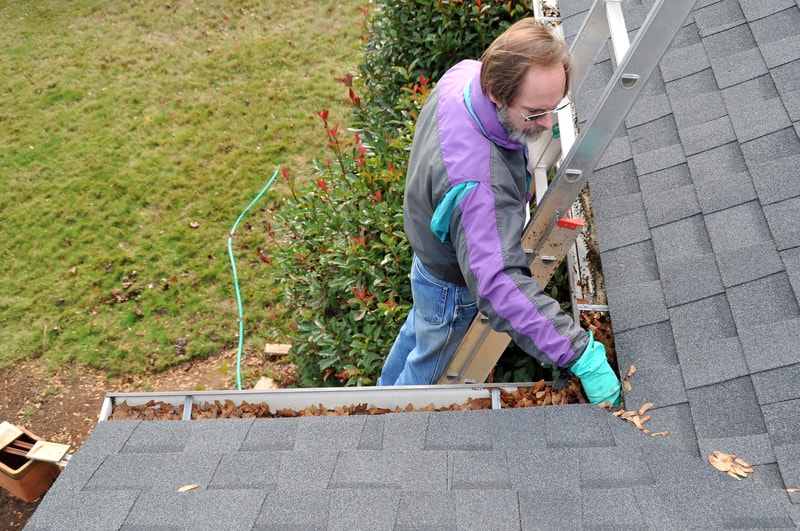-

The change from late summer to early autumn might not sound that dramatic, but if you have an aging roof on your hands it’s best to plan in advance.
Cooling temperatures and the onslaught of rain in the autumn season ahead can often reveal roof issues that you’ve been struggling with.
The overarching goal of preparing your roof for the autumn season ahead should be repairing vulnerabilities and sidestepping the potential for leaks to snowball into a larger predicament.
Clean the Gutters and Make a Roof Assessment
Leaves, small branches, and other debris can actually accumulate in your gutter system over the summer and spell disaster for the short-term, speedy removal of rainwater and potentially imperil the long-term sustainability of your roof.
Give Your Gutters a Purge This Summer
Gutters that are overflowing with debris create a lot of needless issues – rainwater isn’t allowed to run off your roof, down the gutters and through the downspout.
More debris and accumulated rainwater also mean that you’re putting more stress on your roof and siding than need be.
That added stress can over time result in gutters becoming unmoored from the anchor points and ultimately failing completely.
The solution’s to clean your gutters out thoroughly in late summer and very early fall to ensure that the added weight of leaves doesn’t cause any more stress or potential roof damage.
Try Trimming Overhanging Branches
Trimming the branches on overhanging trees can also give your roof many more years of stress-free longevity.
Summer trimming reduces the chances of a cataclysmic event like a large branch slamming into your roof and doing damage, and it also reduces the odds that your gutters will (under stress) pull away from their anchor points.
Another benefit to clearing away debris early and often is that you can significantly decrease the chances of mold buildup or rot problems – both of which are associated with accumulating leaves.
More temperate, humid climates might also be vulnerable to moss growth on the roof’s surface, so make sure that you and a roofing professional check your gutters and roof’s valleys (a frequent source of leaks) for this potentially problematic issue.
Keep Your Eyes Peeled for Roof Damage
Before the temperature really cools down, now’s the best time to replace shingles that have either fallen off and left your attic vulnerable or are very close to coming dislodged from your roof’s surface.
You often hear the expression, “an ounce of prevention is worth a pound of cure,” and that’s nowhere more true than when it comes to repairing shingles prior to the unforgiving rains of autumn (and heavy, compacted snow of winter).
It’s also much easier for a roofing professional to come to your home and make necessary repairs while the weather’s still nice.
If you’re dealing with missing or disintegrating shingles, leaks around your roof’s valley or recent tree damage then you definitely need the help of a roofing professional to diagnose and ultimately fix the issue.
Achieving Year-Round Energy Efficiency
The Department of Energy has studies showing that nearly half of energy consumption among homes in the United States is going towards heating and cooling. This actually has implications for your roof.
Strategically placed vents in your attic ideally sidestep the issues of hot air accumulation, moisture and mold accumulation, and an erosion of your roof’s foundations.
To ensure that you’re getting the most energy efficiency out of your home and to check for roof issues, you might want to consider getting an energy auditor or contacting a local roofing professional before the fall season kicks off, and certainly before winter.
Preparing Your Roof for Autumn
Call Us On (510) 521-7334
Your Local Roofers Since 1978
We invite you to contact us today for an estimate on your roofing project.
1814 Clement Avenue Alameda, CA 94501
(510) 521-7334
info@centralbayroofing.comLicense: 435272 Class B, C-39
Site powered by RooferBoost
Copyright 2017 Central Bay Roofing and Restoration | Login
